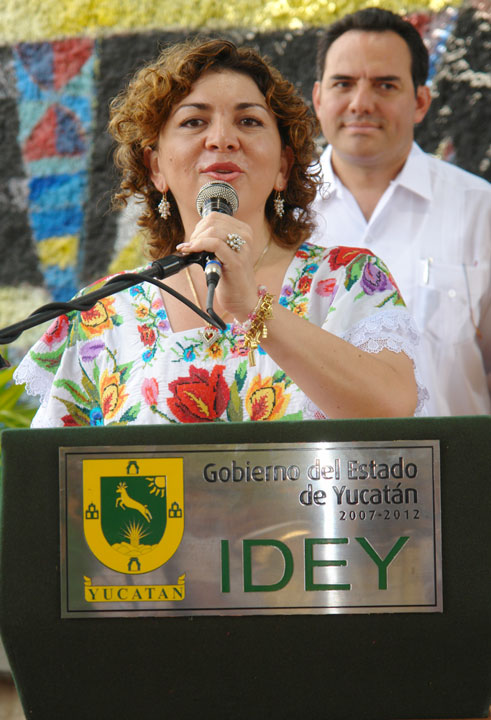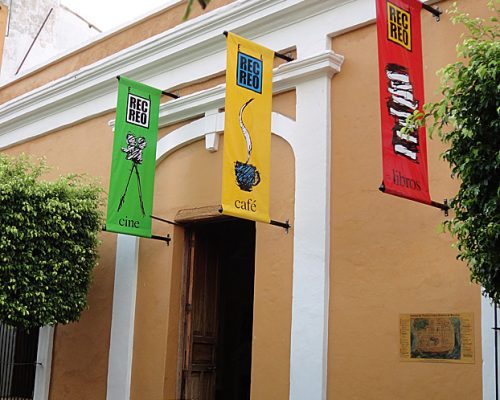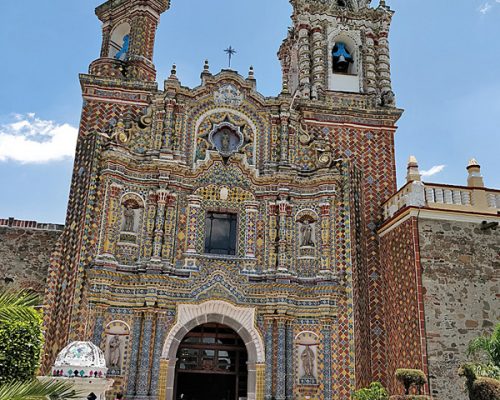Most readers here at Countdown to Mexico are likely aware that there is a rich history of unique and beautiful handwoven textiles here in Mexico. Oaxaca is the state most known for its textiles, but there are wonderful fabrics made throughout the country. If you are interested in learning more about Mexican textiles, I recommend that you visit Mexican Indigenous Textile Project. where you can see lots of pictures and learn more about the textiles from each area of the country.
My daughter-in-law, Martha Pérez, and her associate Fernanda Hegewisch are passionate about México, and also about fashion. A couple of years ago they decided to set up a non-profit foundation – Eliuh Kolektif – to “help preserve and disseminate the textile culture of Mexican indigenous communities.”
 Fernanda & Martha
Fernanda & Martha
They have worked tirelessly to promote Méxican textiles as high fashion – to bring in enough money for the creators that will enable them to continue and pass on their art. A beautiful huipil paired with tight jeans and boots can be a trendy look for today. Or a beautiful silk rebozo can be tied around your neck (or your grandchild’s) for a very special fashion statement.

Some textiles can take many weeks to weave by hand on a backstrap loom – technology which has been in use since before 1,000 BC. The highest quality textiles are dyed by hand with natural pigments – from shellfish, insects, and flowers. Textiles can be cotton, wool, or silk. (Silkworms have been cultivated here in México since the first mulberry trees were planted in Cortés’s hacienda in Coyoacán.) The women will raise their own silkworms and spin the silk themselves. All of this takes an extraordinary amount of time.
If the weavers aren’t able to sell their work for a price high enough to compensate them for the time spent making it they will have to turn to other work in order to support themselves, or start compromising in the quality of dyes, etc. In addition, the young people who would normally apprentice to these masters won’t study the art since they don’t perceive it as a way to make a living in the future. What Eliuh is working at is to illustrate and educate people to the value of these lovely handmade items in order to create a demand that will fairly compensate the makers.
They have worked with the State of Oaxaca and have sponsored a number of press and salon type events to showcase the work and discuss the project. They have a Board of Advisors that is made up of influential people in fashion and textiles. They have been profiled in Elle Mexico and a number of other publications.
Recently they have had two events canceled at the last minute that left them with some beautiful silk rebozos to sell. It was a huge disappointment since they had expected to sell them all and be able to forward the funds to the weavers. Martha asked me if I would like one, and I jumped at the chance to buy such a lovely rebozo to wear. Mine is dyed using “flor de pericon” and has the most beautiful smell, kind of like chamomile. You’ll see a few of the colors available on the first page of their website.
If you’d be interested in one of these lovely rebozos, please get in touch with Martha at martha (at) eliuh.com. Prices are between $4,800 and $5,200 pesos.
Even if you can’t buy a rebozo, I hope that you will buy textiles that are handmade in the indigenous tradition and know that the money you spend is helping to preserve a very important part of Mexican history and a way of life for the families that make them. I think it would be wonderful if women of power and standing in México would regularly wear these special textiles – the only one I am aware of at this time is the current Governor of the Yucatán, Ivonne Ortega Pacheco. Her picture is below.

I hope you visit the Eliuh Kolektif website – the Spanish side is a bit more complete than the English… but you don’t need to read Spanish to understand their mission and see some wonderful pictures, too. I am really impressed with what they are doing, and I hope you enjoyed hearing about it and maybe even learned something.






Cynthia
March 6, 2010What an interesting and worthwhile project.
Zoe Jussel
March 8, 2010You can always be counted on for some good social commentary, interesting factoids, good photos, and a charmer or two of Consuelo. Love the fabrics and textures here as well as the texture and fabric of every day life.
Jonna
March 8, 2010Beautiful rebozos and a wonderful site, what a great thing to do. Oh yes, our Ibom (the Yucatecan pronunciation of her name) is always photographed in beautiful huipiles. They even describe the patterns in the social section of the Diario.
Nancy
March 8, 2010Cynthia, Yes, I think so too!
Zoe, Thank you. Glad you enjoyed it! (and her!)
Jonna, Martha is an amazing woman, this is just one of her interesting pursuits. They are coming for a visit at the end of this week, I am so looking forward to it! There is a Oaxacan crafts fair here in town, I want to take her with me to buy a few huipils and maybe one for Consuelo, too.
Merida Mikey
March 8, 2010Wonderful and informative blog! Keep up the great work!
Leobardo Alberto Rivera Lizarraga
March 9, 2010If you are interested on rebozos, scarfs or other handcrafts, since the last week to this weekend in the lot next to Fiesta Inn (in front of El Habaleño 2) is a large handcraft exposition from all Mexico, there you can find textiles, pottery, moles and many things more. Free entrance and really good prices.
Nancy
March 9, 2010Mikey, Thank you!
Leobardo, Yes, Paul and I have already been to the crafts fair, and as I said earlier I plan on taking Martha with me to buy a few! Thanks!
islagringo
March 11, 2010Great article. You should think about visiting the textile mills just outside of Oaxaca city sometime. Watching them loom rugs in fascinating.